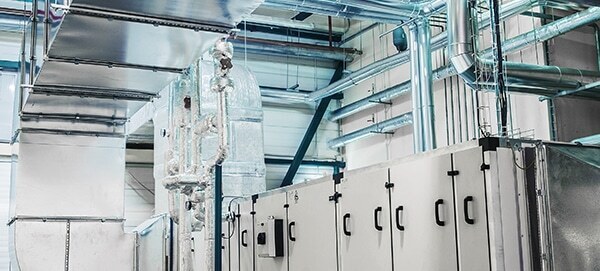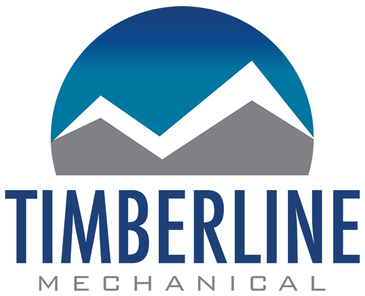If you’ve heard of a substance called ethylene glycol, you probably know it as the main component of automotive antifreeze. It is also referred to as engine coolant, which can create some confusion. Does it keep your engine from freezing or getting too hot? The answer is, “Both.” Ethylene glycol works to maintain the right engine temperature regardless of the outside temperature.
But car engines are not the only place you’ll find this important fluid. It is also used in hydronic heating and snowmelt systems.

Understanding Glycol
Glycol is a compound that is in the same chemical family as alcohol. There are two commonly used forms of glycol:
- Ethylene glycol. This organic form has been used for many years and has strong anti-freezing properties. Unfortunately, it is also toxic and has a sweet taste, which makes it a dangerous substance to have around children and pets. For that reason, it is primarily used in industrial settings and is carefully controlled to ensure it isn’t consumed and that it doesn’t make its way into drinking water sources.
- Propylene glycol. This form of glycol is a modern, manufactured, non-toxic version of its older counterpart. It also is effective as an anti-freezing agent and is used in residential and commercial applications, as well as in industrial food processing settings. You can find it in many types of consumer goods like cosmetics and oral hygiene products, where it functions as a moisture-retaining substance and preservative.
In addition to their ability to lower the freezing point of water and improve the quality of consumer goods, the two types of glycols can also be used to inhibit corrosion.
At Timberline Mechanical, we use propylene glycol exclusively, unless a specific industrial application requires ethylene glycol.
Glycol in HVAC Systems
Some HVAC solutions utilize closed-loop systems. They use a continuous loop of pipes that connect to a system or recirculating pump. Water flows through this sealed system, transferring heat to or from the conditioned environment as needed.
Closed-loop HVAC systems are very efficient, but there is a risk in northern climates that the coils/pipes in the system that are exposed to the elements will freeze in frigid winter temperatures. To keep that from happening, propylene glycol is often added to the water to lower its burst point from 32 degrees Fahrenheit to between 0 degrees and -10 degrees Fahrenheit.
Water is both more effective at transferring heat and less expensive than propylene glycol. However, the cost of repairing or replacing HVAC system components makes it well worth it to invest in adding this anti-freezing fluid to a closed-loop system. And, because it is a sealed system, once you add the propylene glycol, you don’t have to replenish it.
So, while you wouldn’t need glycol in a home’s baseboard/radiant heating system, you should consider it for any system that is exposed to an outdoor, non-tempered environment. This can include a snowmelt system for a driveway or a process system utilizing a chiller where the process temperatures can approach 32 degrees Fahrenheit or lower.
Glycol in Hydronic Snowmelt Systems
If you live in a northern climate and/or at a high elevation—and especially if you have a driveway and walks that are north-facing or shaded and don’t get much sunshine—you have two main options for keeping snow and ice from accumulating. The first is to shovel quickly and completely whenever it snows. The second is to design and implement a snowmelt loop for your residence or business to work with the existing boiler system or an upsized boiler to meet the new design conditions for the addition to the system.
Most homeowners choose the first option. However, as we all know, even if you are diligent about shoveling or using a snowblower, ice will form any time snow melts in warmer daytime temperatures, water flows onto the concrete surfaces and then the temperature plummets overnight. This can create treacherous conditions that can lead to injuries if someone slips on the ice and property damage if vehicles do. And either of those incidents can lead to insurance claims and lawsuits.
To address these risks, hydronic snowmelt systems were developed. These systems use a series of tubes beneath the concrete “pad” (the driveway, sidewalk, etc.) that circulate a mixture of water and propylene glycol that is heated to around 140 degrees Fahrenheit. The mixture radiates heat into the concrete, walkway pavers, etc. to melt snow and prevent ice from forming. Typically, they include sensors that automatically activate the system when the combination of precipitation and sub-freezing temperatures is detected.
You’ll find hydronic snowmelt systems in use from Colorado on up to Canada, where businesses and homeowners rely on them to keep driveways and sidewalks safe for customers, friends and family. There are also electric snowmelt systems designed for the same purpose.
The Science of Effective Heating and Cooling
Glycol’s unique properties and how they’re used in HVAC and hydronic snowmelt systems demonstrate the balancing act that temperature control systems (and the people who install and maintain them) must perform. It’s not as simple as putting a furnace, boiler or air conditioner in place and firing it up. There is a great deal of complex science behind keeping a home or business cool in the summer and warm in the winter.
And, of course, you want to maintain a comfortable temperature as cost-effectively as possible. That means maximizing heat transfer to use less energy while also protecting your HVAC equipment from freezing.
Understanding the physical properties of water, glycol, and a mixture of the two is essential. For example, in a snowmelt system, you want the mixture to be approximately 30% glycol. This formulation gives the system the burst protection it needs but without the fluid becoming jelly-like and hard to pump through the pipes. And similar considerations affect the operation of closed-loop HVAC systems.
In short, HVAC professionals must be part technician and part scientist!
To learn more about our HVAC design, installation and maintenance services, please contact Timberline Mechanical at your convenience.
About Timberline Mechanical
Timberline Mechanical is a Boulder HVAC Contractor located in Boulder, CO, and serving the Colorado Front Range, including Broomfield, Longmont, Louisville, Lafayette, Superior and Erie. We are dedicated to providing the intelligent solutions necessary to keep your Boulder Commercial HVAC equipment running efficiently and at its peak performance. Whether we are completing a service call request, providing Commercial HVAC Preventive Maintenance or conducting Special Projects work, we offer intelligent commercial HVAC solutions to ensure that your business needs are met. You can focus on your business while we make sure your commercial HVAC equipment is running smoothly. https://www.timberlinemechanical.com/
Timberline Mechanical Media Contact
John Kuepper
Owner
+1 303-258-3589
Release ID: 171436

